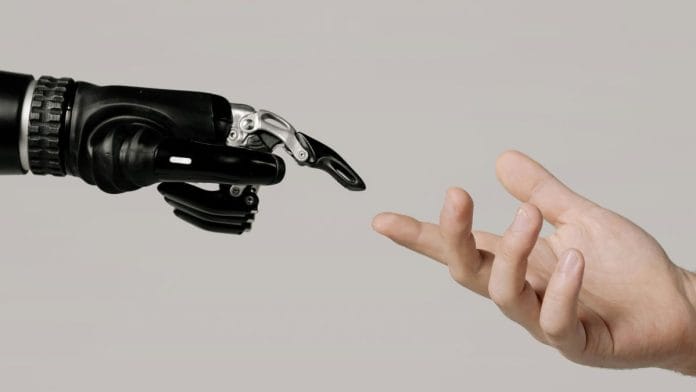On 7 November 2024, American voters made a major decision. More than choosing a new president, their vote was to swing away from the drift to the Left and globalism to being more ‘America First’. This shift is also in its wake redrawing the global technology landscape and the coming decade of technology—Techade.
The news flow since Donald Trump’s inauguration has been at warp speed. President Trump is executing a new playbook. None of the nuance, subtlety, gradualism and globalism of the previous presidencies and none of the tentativeness either.
A $500 billion investment by Apple Inc toward manufacturing and AI, $100 billion by TSMC in semiconductor fabs, $500 billion from a consortium including Softbank’s Masayoshi Son and Open AI’s Sam Altman to build AI infrastructure, and President Trump’s tariff strategy are completely and deeply redrawing the fastest growing piece of the global economy.
It is now increasingly clear that the coming decade—the Techade—will not look anything like the decade that has gone past.
Also read: Geopolitics today is like a video game–technology is power in the new world order
Global competition, not collaboration
Tech was earlier seen as a global collaborative area with the internet being the glue. The World Trade Organization, in a sense, encouraged this type of utopian view of electronics and semiconductor value chains.
But all the warm and fuzzy goals are in opposition to reality.
China, with its walled-off Internet and data economy, its restrictive access to markets, and its questionable ways of “gathering” tech R&D from the West, has established itself as a powerful presence on the global value chains and as a competitor to America’s long-standing leadership in the tech space. The Deepseek moment will go down as the day when China officially became the challenger.
Technology is disruptive and will create new normals—that is to be expected. But most governments around the world have had just a passive role. Except perhaps for China, which over the last two decades has had a below-the-radar strategic focus on tech. This accelerated with the recent export control regime by the US.
The WTO-led global supply chains are being replaced now with a geopolitical battleground where the jousting is on for who will prevail in shaping the future of tech, its standards and its access.
Also read: Top ministers talk India’s ‘techade’ at Delhi book launch — UPI to e-governance
All about economic growth
This undeclared battleground needs to be understood. This is neither about who registers IPs nor a race for scientific recognition nor simply a battle of wits and ideas. The underlying premise of this new race—the new kind of arms race—is about the future of winners and losers in economic growth.
For a world that’s still battle-scarred from two years of Covid-19 and the two ongoing conflicts in Europe and the Middle East, tech represents economic growth. It’s an opportunity to bring prosperity and job creation back and reduce costs. And while there is a lot of breathless hype around emerging tech in general and AI in particular, it is important to recognise that the real benchmark for AI is its impact on economic growth and gross value added—to an enterprise and to a nation. And it’s this promise of AI that characterises the coming Techade.
This is a Techade that will no longer only require general skills and educational qualifications. It will require very high levels of experience and capabilities. The last decade was about flying a single Engine Cessna 172, while the coming Techade will require one to have the skills and experience of a combat jet aviator. Not exactly the analogy that will resonate with everyone, but as an amateur aviator and aviation nerd that’s one I want to use.
These shifting sands will undoubtedly also impact India’s goals and ambitions. Ever since PM Narendra Modi launched Digital India in 2015, I have been predicting India’s rise and growth in tech and innovation. Tech innovation in AI, semiconductors and electronics will also be a big part of India’s ambitions both to grow our economy as well create a globally competitive and efficient economy. India has successfully built out the first wave of its innovation and digital economy over the last eight to nine years and is poised to enter its second wave.
Our economic strategy, which was built on FDI and public investments, will transition into a more private consumption and private investment-led one over the coming years. Tech and innovation especially in these new areas of deep technology, capabilities and skills will have to increasingly compete for capital and investments with other countries. But our talent is an asset that can help tilt the scales in competitiveness.
This second wave is also the gateway to our IndiaTechade and from there to Viksit Bharat—both goals that we as a nation can and must achieve. But to get there we have to make the successful crossing in a much more competitive Techade.
Buckle up, 2025 is going to be an interesting ride.
The author is a former Union minister and tech entrepreneur. Views are personal
(Edited by Theres Sudeep)







The Modi government surely does understand.
That is the reason why it goes around with a begging bowl asking for technology transfers from western nations. From jet engine technology to submarine AIP technology, all India does is beg for technology transfers. In fact, all western powers are wary of dealing with India because they know very well that soon enough we will come begging for the technology.
So much for being the “Vishwaguru”.